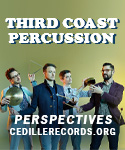Recorded at the Amsterdam Concertgebouw in June 1972, Josef Krips’ performances of Mozart’s last two symphonies now make a welcome reappearance in newly refurbished digital sound. The original LP release was, by the standards of the day, pretty impressive in sonic terms and conveyed much of the natural warmth and clarity for which this great auditorium is renowned. This reissue version, however, presents instrumental detailing (particularly in contrapuntal episodes such as those found in the finale of the G minor symphony) with added focus and brilliance, and also generates another dimension of spatial realism, in that the listener is now aware of the orchestral spread front to back, something that never was possible in the days of two-dimensional, left-to-right stereophony.
As to the performances, they are couched in the kind of traditional Germanic conventions you’d expect from a conductor of Krips’ epoch. Useful comparisons might be drawn with Karl Böhm’s DG Berlin recordings of these symphonies from his cycle taped between 1959 and 1966. A characteristic shared by both is the very pedestrian tempo chosen for the minuets; admittedly that of No. 40 has greater urgency and bite, though both Krips and Böhm take a very relaxed view of the Jupiter’s third movement. Another point of common agreement comes in the way both conductors shape and project themes in the Andantes of each symphony. With Böhm, the Berlin strings have a darker richness in that of K.550, but otherwise the performing concept differs little in either version. One feature that does distinguish Krips from Böhm in the G minor work is the former’s very relaxed speed at the beginning; it’s frankly too slow and the consequent diminution of the music’s power to unsettle is a drawback. Similarly, greater trenchancy and forcefulness would have made the finale more vital and gripping. Böhm achieves this, and at a not much faster tempo.
Krips’ account of the “Jupiter” dwells long over its structural grandeur, particularly in the outer movements, and provides a useful alternative to the many over-fast interpretations you’ll come across today. So these are Mozart performances from a different–not necessarily more correct–age of interpretation, and they sound pretty good for their vintage. There are finer, more recent alternatives at mid-price, especially of Neville Marriner’s Philips Duo recording of Mozart’s closing symphonic trilogy with the Academy of St Martin in the Fields. Brisk speeds, outstanding orchestral playing, and excellent recorded sound make that set a must.
































